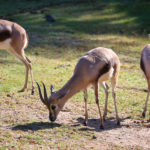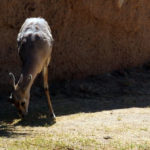Speke’s Gazelle
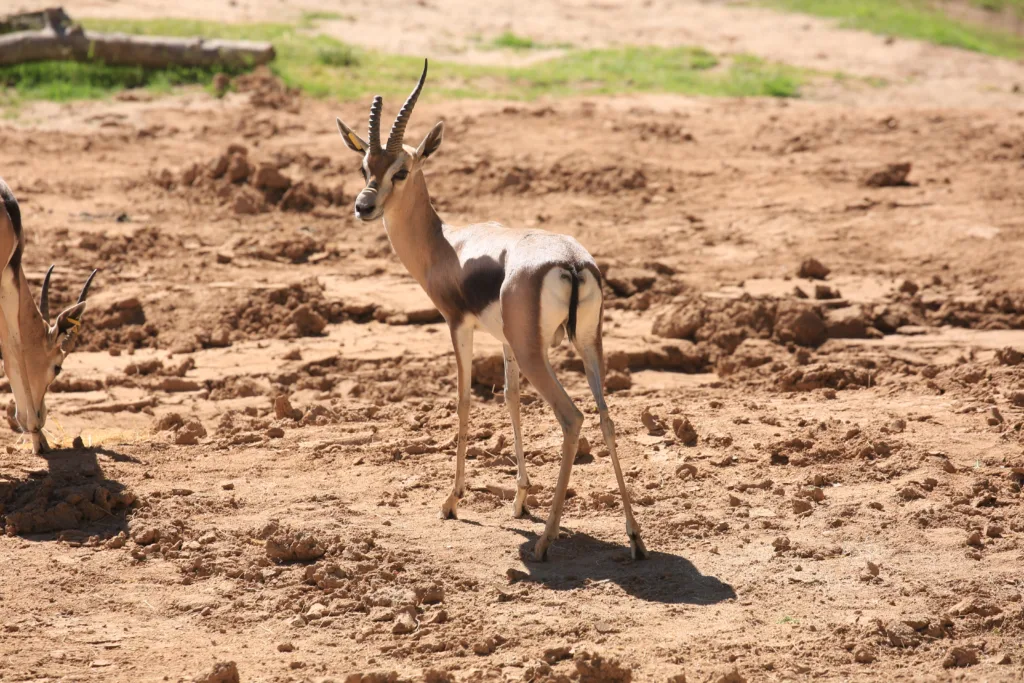
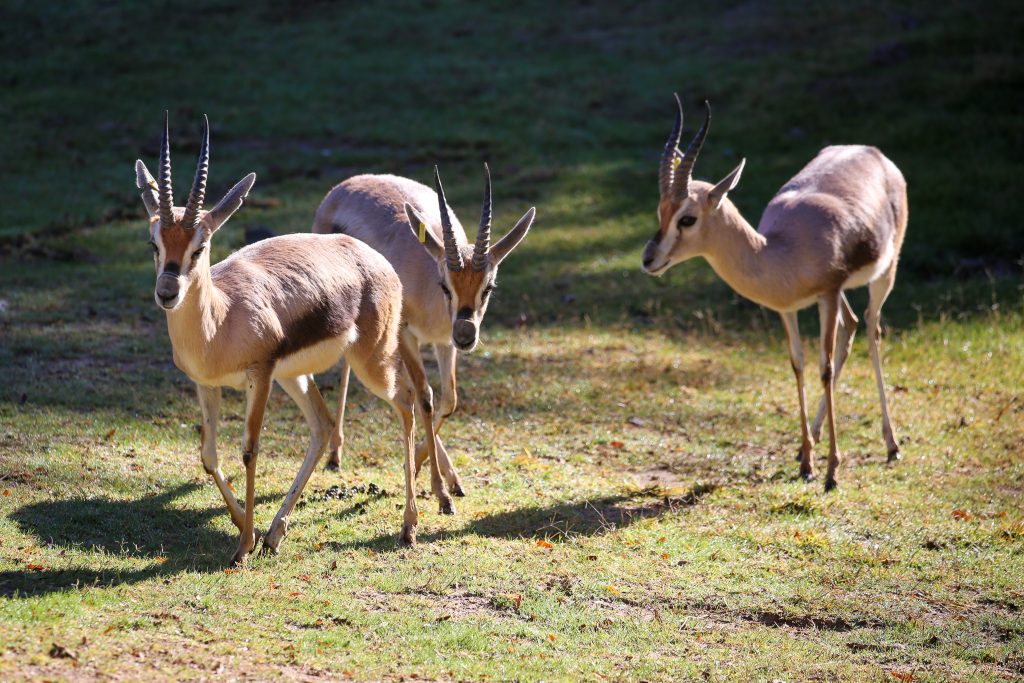
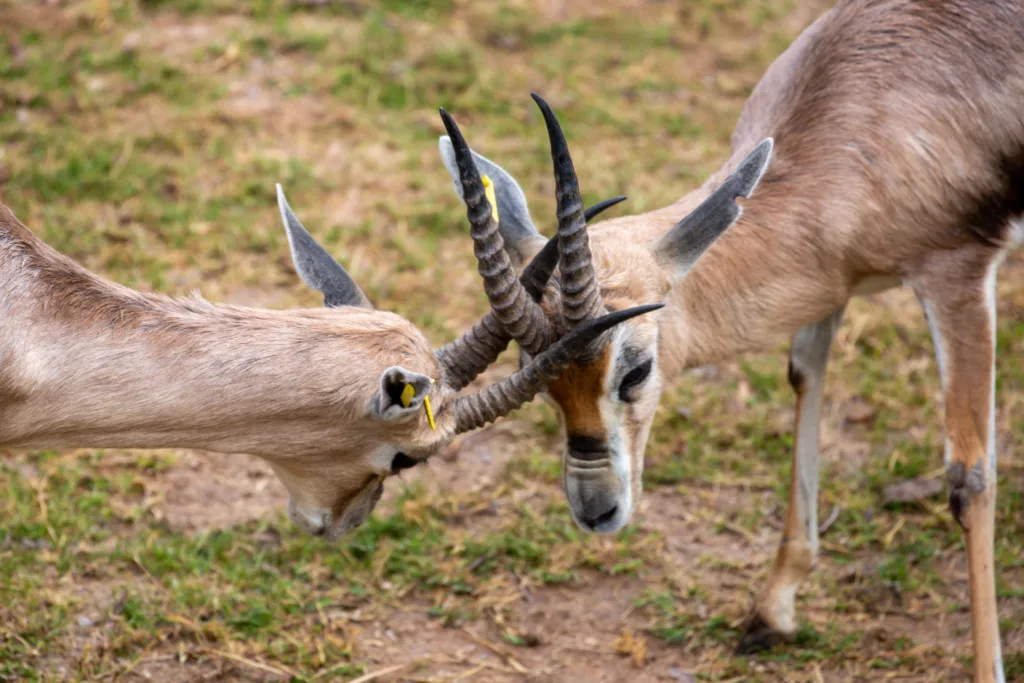
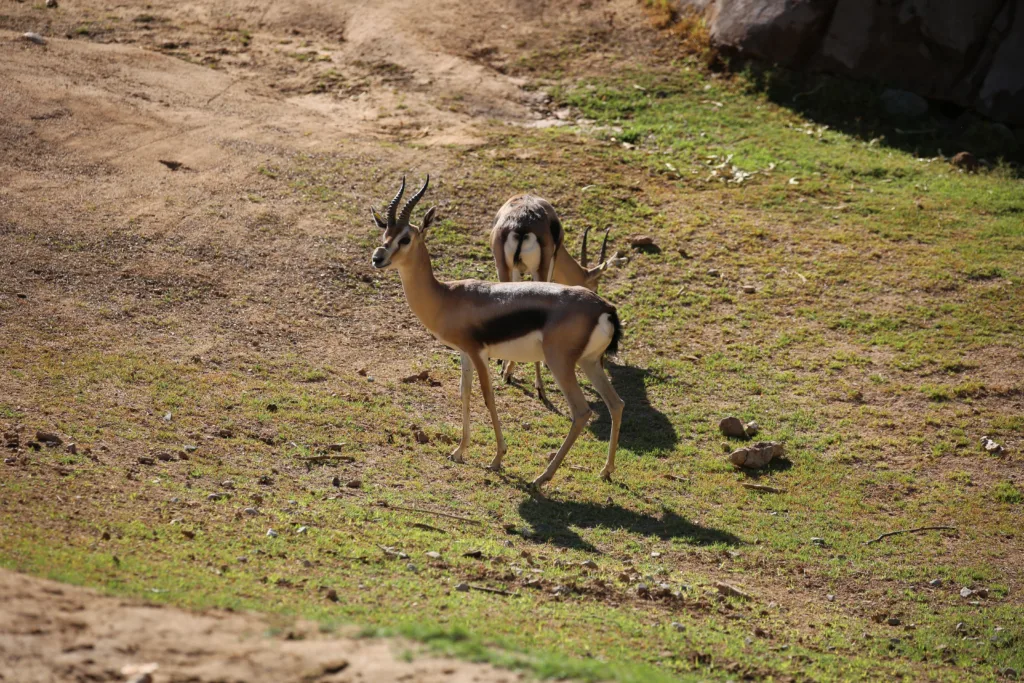
Speke’s gazelles are a small species of antelope with a light brown body, white stomach, and a dark stripe separating the two colors. They also have white facial markings, but are most notably distinguished by their inflatable nose sacs. Both the males and females have horns, which are ringed and curve backwards towards the body in a slight S shape.
Diet:
Speke’s gazelles are herbivores with a 4-chambered stomach, making them ruminants. Due to the climate in which they live, they feed in the mornings and evenings on grass, shrubs, roots, and other plants. Speke’s gazelles are also adapted to go long periods of time without water. At Reid Park Zoo, the gazelles feed on carrots, apples, and hay.
In the Wild:
As social animals, Speke’s gazelles live in two types of herds: a group of bachelors, or a dominant male with a harem of females. Dominant males mark their territory by urinating, defecating, and scent marking with their preorbital gland, and work hard to keep the females in their territory of up to two square miles. Bachelor herds are made up of juvenile and young adult males that do not have harems. Speke’s gazelles have two strategies to avoid predators. Adult gazelles will alert the herd by inflating their nose sac and producing a honking noise. This then initiates a behavior called “pronking”, a combination of jumping, running and bouncing. Infant Speke’s gazelles will lay motionless in the grass to avoid predators, only moving to nurse.
Conservation issues/actions:
The biggest threat to Speke’s gazelles is competition with grazing cattle. Cattle grazing also leads to habitat degradation. Furthermore, the lack of protected areas coupled with the political instability and war conflicts in Somalia inflates the threat.
Species Name
Speke’s Gazelle
Scientific Name
Gazella spekei
Continent
Africa
Adopt a Gazelle
At the Zoo
Reid Park Zoo is an active participant in the Speke’s gazelle Species Survival Plan, but is not involved in breeding. Reid Park Zoo is a place where males can live until there are females in other zoos available that are good genetic breeding matches for them. This ensures that there will be genetic diversity within zoo populations and prevents inbreeding.
Proud Parents
- Paul Felton
- Lisa Ewan
- Ann Marie Wolf
- Lainie R. Levick

